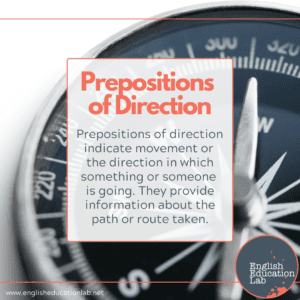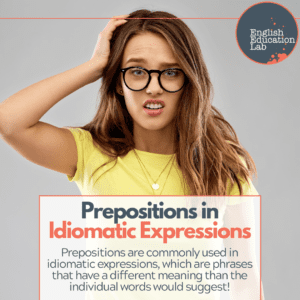
What are prepositions? Demystifying their role and importance
Do prepositions in the English language confuse you? Are you unsure about their role and importance? You’re not alone! Prepositions may seem small and insignificant, but they play a critical role in clarifying relationships between words and phrases in a sentence. In this article, we aim to demystify the mysterious world of prepositions and shed light on their crucial function.

Prepositions are words that convey spatial, temporal, or logical relationships. They give us information about location, time, direction, possession, and more. Without prepositions, our sentences would lack clarity and precision, leading to confusion in communication.
Throughout this post, we will explore various types of prepositions and provide examples to help you better understand their usage. We will discuss common mistakes to avoid, offer tips for using prepositions effectively, and explain how prepositions function within different sentence structures.
By the end of this post, we hope you will have a better grasp of prepositions and their significance. So, let’s dive in and unravel the mysteries of these tiny words that make a big difference in our everyday language.
Definition and function of prepositions
Prepositions act as connectors, linking nouns, pronouns, or phrases to other words in a sentence. They establish relationships between different elements, allowing us to express concepts such as location, time, manner, and more. By understanding the function of prepositions, we can effectively convey our intended meaning.
For example, consider the sentence: “The book is on the table.” The preposition “on” establishes the relationship between the noun “book” and the noun “table,” indicating that the book is physically located on top of the table. Without the preposition, the sentence would be incomplete and lack the necessary information.
Prepositions are versatile and can be used in various sentence structures. You can find them at the beginning, middle, or end of a sentence, depending on the context and intended meaning. Understanding how prepositions function within different sentence structures is essential for effective communication.
Common prepositions and their usage
Now that we understand the function of prepositions, let’s explore some common prepositions and their usage. While there is a wide range of prepositions in the English language, we will focus on the most frequently used ones.
Prepositions of Time
Prepositions of time help us convey when an action takes place. They provide information about specific points in time, duration, and frequency. Some common prepositions of time include “in,” “on,” “at,” “during,” and “for.”
– “In”: We use “in” to indicate a general period of time, such as months, years, seasons, or longer durations. For example, “I will be on vacation in July” or “She was born in 1990.”
– “On”: “On” is used to specify particular days or dates. For example, “We have a meeting on Monday” or “Her birthday is on the 15th of May.”
 – “At”: “At” is used to denote specific times or points in time. For instance, “The concert starts at 8 PM” or “I usually have breakfast at 7 AM.”
– “At”: “At” is used to denote specific times or points in time. For instance, “The concert starts at 8 PM” or “I usually have breakfast at 7 AM.”
– “During”: “During” is used to indicate a period of time in which an event occurs. Two examples of this are: “She studied hard during the exam week” or “The fireworks display took place during the festival.”
– “For”: “For” is used to express the duration of an action or event. For instance, “I have been waiting for 30 minutes” or “They will be on vacation for two weeks.”
Remember to use the appropriate preposition of time to accurately convey your intended meaning. Using the wrong preposition can lead to confusion or misinterpretation.
Prepositions of Place
Prepositions of place help us describe the location or position of something. They provide information about where an object or person is in relation to other things. Some common prepositions of place include “in,” “on,” “at,” “under,” “beside,” and “between.”– “In”: We use “in” to describe something located within an enclosed space. For example, “The cat is in the box” or “She lives in New York City.”
– “On”: “On” is used to indicate that something is physically touching or in contact with a surface. For example, “The book is on the table” or “He put the keys on the counter.”
– “At”: “At” is used to specify a particular point or location. For example, “I will meet you at the park” or “They arrived at the airport.”
– “Under”: “Under” indicates that something is below or beneath another object. For example, “The dog is sleeping under the table” or “She found her lost wallet under the bed.”
– “Beside”: “Beside” is used to describe something located next to or by the side of another object. For example, “The lamp is beside the sofa” or “She stood beside her best friend.”
– “Between”: “Between” is used to express something located in the middle or surrounded by two or more objects. For example, “The sandwich is between two slices of bread” or “He sat between his parents.”
Using the appropriate preposition of place is crucial for accurately describing the location of objects or people in a sentence. Pay attention to the specific relationships you want to convey.
Prepositions of Direction
Prepositions of direction help us indicate movement or the direction in which something or someone is going. They provide information about the path or route taken. Some common prepositions of direction include “to,” “from,” “into,” “out of,” “through,” and “across.”
– “To”: We use “to” to indicate movement toward a specific destination. For example, “I’m going to the store” or “She walked to the park.”
– “From”: “From” is used to express movement away from a particular location. For example, “He came from the office” or “They ran from the rain.” 
– “Into”: “Into” indicates movement toward the inside or interior of something. For example, “She jumped into the pool” or “He put the groceries into the bag.”
– “Out of”: “Out of” is used to express movement from inside to outside or leaving a particular place. For example, “The cat jumped out of the window” or “She stepped out of the car.”
– “Through”: “Through” indicates movement from one side or end to the other. For example, “They walked through the forest” or “The river flows through the valley.”
– “Across”: “Across” is used to express movement from one side to the opposite side of something. For example, “She swam across the river” or “He walked across the bridge.”
Using the correct preposition of direction is essential for accurately describing movement or the path taken. Be mindful of the specific direction you want to convey.
Prepositions of Manner
We use prepositions of manner to describe how an action is performed or the way in which something happens. They provide information about the method, manner, or style of an action. Some common prepositions of manner include “by,” “with,” “like,” and “in.”
– “By”: We use “by” to indicate the means or method used to accomplish something. For example, “The painting was created by a famous artist” or “He won the race by running faster.”
– “With”: “With” is used to express the instrument or tool used to perform an action. For example, “She wrote the letter with a pen” or “He cut the bread with a knife.”
– “Like”: “Like” is used to draw a comparison between two things or to indicate similarity. For example, “He eats like a bird” or “She dances like a professional.”
– “In”: “In” is used to describe the manner or style in which something is done. For example, “He spoke in a calm voice” or “She painted in an abstract style.”
Using the appropriate preposition of manner is essential for accurately describing how an action is performed or the way in which something happens. Consider the specific details you want to convey.
Prepositions in Idiomatic Expressions
Prepositions are also commonly used in idiomatic expressions, which are phrases that have a different meaning than the individual words would suggest. Understanding these expressions can greatly enhance your language skills and comprehension.

Here are a few examples:
– “In the meantime”: This expression means “during the intervening period of time” or “while waiting for something else.” For example, “He took a break, and in the meantime, she continued working.”
– “On the other hand”: This expression is used to present an alternative or contrasting viewpoint. For example, “I love chocolate. On the other hand, my sister prefers vanilla.”
– “By heart”: This expression means “by memorization” or “without referring to written notes.” For example, “She knows the lyrics to that song by heart.”
– “In the end”: This expression refers to the final result or outcome of a situation. For example, “After much deliberation, they decided to move to a different city in the end.”
Idiomatic expressions are an integral part of the English language, and understanding their usage can greatly enhance your fluency and communication skills.
Conclusion
Using prepositions correctly is crucial for effective communication. A misplaced or incorrect preposition can change the meaning of a sentence or make it difficult to understand. Here are some reasons why using prepositions correctly is important:
1. Clarity – Prepositions help provide clarity by indicating the relationships between words and phrases. Using the appropriate preposition ensures that your message is clear and easily understood.
2. Precision – Prepositions add precision to your language by conveying specific information about location, time, direction, and more. Using the right preposition helps you express your thoughts accurately.
3. Grammar and style – Correct usage of prepositions demonstrates a good command of grammar and enhances the overall quality of your writing. It shows attention to detail and professionalism.
To improve your preposition usage, consider the following tips:
1. Read and listen – Pay attention to how prepositions are used in books, articles, conversations, and other forms of communication. This will help you internalize their correct usage.
2. Practice – Regularly practice using prepositions in your writing and speaking. This will help you become more comfortable and confident in their usage.
3. Consult resources – Refer to grammar books, language guides, or reputable online resources that provide explanations and examples of preposition usage.
By investing time and effort in understanding and using prepositions correctly, you can greatly enhance your communication skills and convey your thoughts with precision and clarity. Finally, don’t give up! We all know that using prepositions correctly and effectively can be challenging, but the more you practice, the easier the process becomes. Stick to it, my ESL friends!
Get Your Free Cheat Sheet on Understanding the English Articles Here!
Get your Free Guide to Speaking English with Confidence- Your 5-Step Roadmap here!
Further Reading
How to become fluent in English without spending a dime!
Boost your English listening skills with these proven strategies
Five must-have English grammar books for language learners
ESL classes online – 5 top tips to make the most of your lessons
Unlocking the power of words: Strategies for building a strong vocabulary


Transform your ESL lessons with TED Talks: Powerful teaching resources for ESL teachers

